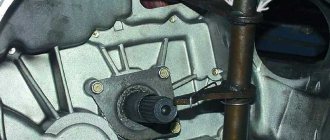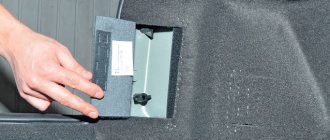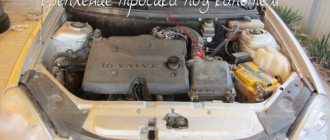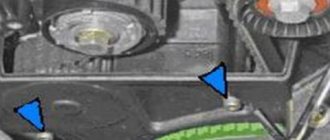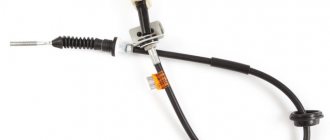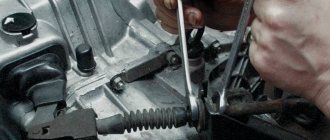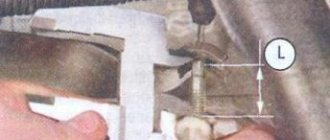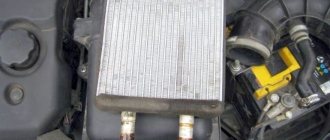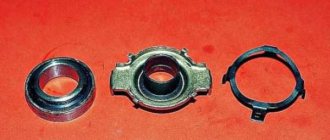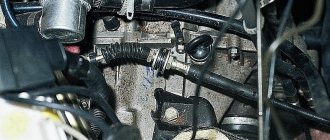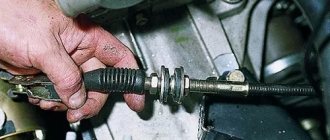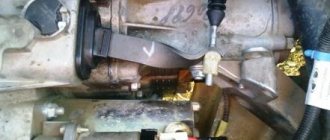A caring attitude towards the clutch is instilled in driving school. Gently pressed, switched gears, gently released. The clutch is the unit connecting the gearbox and the motor. Adjustment is needed after replacement. As a rule, clutch replacement can be done in a garage. Lada Priora is generally a repairable car. At a service station, work will cost 1500-2000 rubles. The price of a set of original clutch costs approximately 2000 rubles. On foreign cars the price of the unit is more expensive even with replacement and adjustment. With the purchase of your first car, your understanding of the full value of the clutch increases significantly. On the Priora - one of the most popular city cars - many learned to drive (for real, without an instructor!) and perhaps changed the unit in the garage.
The Priora clutch is simple in design, but, nevertheless, it must always be in good working order - the health of the car and traffic safety depend on it. Therefore, you need to know everything about replacing a unit on a Lada Priora - after all, it’s not just a clutch pedal, it’s a whole mechanism. Which is involved in setting the car in motion - the gearbox and the engine are on friendly terms.
As an example, everyone understands that to disengage the clutch the pedal must be depressed. What happens if the machine does not respond to this? Will it bite or stall in the middle of the road? You shouldn’t listen to advice at all, trying to torture the gearbox without a clutch, “catch” the speed. There is only one way out of this situation: learn a good lesson and worry about the “health” of your “friend” in time. Read the article to the end and you will be safe - this unit will definitely not let you down on the road!
LUK clutch on Priora - looks like this
What does the Priora mechanics clutch consist of?
Before changing a part on a Lada Priora (or performing any other operation similar to replacement), you need to know everything about the structure of this mechanism. It consists of several components:
- Gearbox input shaft;
- Clutch release fork;
- Fork axle bushing;
- Pressure disk assembly (basket);
- Driven clutch disc;
- Flywheel;
- Mechanism for automatic adjustment of cable length;
- Clutch release clutch (release bearing);
- Lower end of cable sheath;
- Drive mechanism (bracket attached to the gearbox housing, seal, drive cable, bushings, release bearing guide bushing, cable guide, locking bracket, axle, pedal and lining).
Troubleshooting clutch problems
The reason for an uncomfortable ride and the beginning of the moment of movement is a very tight pressing or, even worse, a loose clutch pedal, which can lead to the creation of an emergency situation on the roads. What is better: replacement or repair?
The design feature of the clutch is such that when the angle of inclination of the disc spring changes during wear, more force must be applied to press. In this case, the cable may break, the release bearing may be damaged, and the clutch pedal clicks and creaks. All these problems can be fixed.
To replace the cable, it is better to first remove the air filter. Using keys, remove the cable along with the wiring from the groove of the lever. To make repair work easier, it is better to first pull the clutch pedal towards you and remove it. Now you can freely remove the cable sealing cover and remove the wiring from the tip. When reinstalling, its end should be at the same level as the new, serviceable one.
If the sensor is faulty, it is replaced with a new device. An indicator of cable replacement is a problem with the plastic bushing on the pin. If it is very deformed, it’s time to change it, after lubricating it with a special substance.
After replacement, you need to adjust the clutch drive on the Priora. To do this, simply pull the cable by the tip forward until it stops completely. The distance from the lever to the end should be no more than 27 mm. The clutch should be replaced by a specialist to avoid further operational problems.
Lada Priora car clutch
Standard clutch - article number and price
The VAZ 2170 Priora comes from the factory with a clutch manufactured by LUK. Catalog number (article): 21703-1601130-00. You can find it at a price of two thousand rubles, and if you do not need the entire set of the mechanism (not counting the drive mechanism), you can find the parts by catalog numbers:
- Clutch assembly (release bearing): 21703-1601180-10;
- Driven disk: 21703-1601130-00;
- Pressure plate assembly: 21703-1601085-00;
- Bolt: 21080:1601207-00.
The “native” LUK kit is considered “softer” than its analogues and, moreover, comes with a reinforced basket.
Which clutch is better to put on a Priora?
Clutch type 21703-1601000-00, intended for Priora cars with engine 21126 (16 cl.). Manufacturer: AvtoVAZ, Lada-Detal branded packaging. That is, an analogue of what the factory puts on cars during assembly. In a few words I will say that this is a strengthened clutch, the springs of the pressure plate (“basket”) are increased. An imported driven disk (from LUK) is also used. This allows you to use it for at least 100 thousand km (declared by the factory). By the way, the factory set worked for 113,500 km, the wear was 80 percent, almost to the rivets. The appearance of the packaging is as follows:
Inside there are the following parts: - pressure plate
Well done. There is a marking: EVR - stands for EXEDY VIS RUSSIA, a concern that produces clutches in Russia, bought out the production of the VIS company. Accordingly, this clutch can be considered partially imported. The basket is superior to the factory one (also an imported set - for model 2110 -) in thickness and number of pressure springs.
Mechanics
Mechanically, the clutch operation process is extremely simple. Let's analyze it from the moment the movement begins. After starting the engine, the car is in neutral gear (starting the engine in gear is bad manners). The clutch is depressed all the way - this means that it is turned off, the driven and pressure plates have separated, that is, a moment is created to change gear. The gearshift lever is moved to position 1, and first gear is engaged.
The pedal is smoothly released (the clutch is engaged), at this moment the most important thing happens: the distance between the pressure plate and the driven one is constantly decreasing, and the force transmitted by the engine has already set one disk in motion, which makes the moment of “collision” of the two disks become difficult. If the pedal is released abruptly, they will quickly touch, which means that the disc will pause (imagine walking and tripping over a stone - much the same thing happens with an engine).
The engine may stall, or in the best case, the car will simply “bite.” At such moments, the “petals” on the driven disk suffer greatly - the more “flattened” they become, the closer the time for replacing the “hitch” is. If the discs come into contact smoothly and the driven disc is slowly set in motion, the car starts from a standstill.
AMT Robot
Priora with a robotic transmission was installed only on restyled versions (2013-2018), and the choice of car enthusiasts was not always in favor of the “robot”. But the robotic automatic transmission was developed based on the design of the new manual transmission, so there is nothing to be afraid of - everything is reliable. The computer or, in this case, the “robot” itself controls the engagement and disengagement of the clutch and changes gears itself (except in cases where the driver takes responsibility for manual gear shifting).
A Priora with a “robot” can also bite when starting and changing gears. The reason for this may be either an electronic error or wear of the “clutch” mechanism - if it’s time to change some part, then no matter how much the “robot” wants to smooth out the next peck, it will not be able to do so.
Manufacturers and prices of analogues
- Kraft (article W05200G) – price from 3,300 rubles;
- Pilenga with a metal-ceramic disc (article CK-P4005XR) – price from 10,000 rubles (an excellent, but expensive sports kit with a reinforced mechanism with a reinforced release disc);
- Pilenga (article CK-P 4005) – price from 2,800 rubles;
- Sachs (article 3000 951 033) – price from 3,800 rubles;
- Valeo (828 222) – price from 2,300 rubles.
The Valeo kit for Priora is considered very similar to what Luk produces - it is also “soft” in feel.
Symptoms of a problem
The main symptoms of a malfunction are:
- Hum, whistle and other unnecessary sounds when pressing or releasing the pedal;
- “Push” even if the working moment was caught on time.
If there is a suspicion that the clutch is faulty, then diagnostics can be done using traditional methods, without disassembling the engine compartment internals.
Slip check
We fix the car with the handbrake, engage third or fourth gear, slowly (slower than usual!) depress the leftmost pedal and press the gas at operating torque. If everything is fine with the handbrake, then the test will be true. The car has stalled, which means it’s time to change the pressure plate.
Clutch sensor
It happens that when switching gears, the car for some reason begins to jump and twitch. The same signs are observed at low speeds. The whole reason is that the clutch sensor is faulty. It is located in the cabin, at the place where the clutch pedal axis is attached, and only on those cars that use E-gas. They often lack a throttle position and idle speed sensor.
A magnet that rotates with the drive gear and two Hall sensors, which convert changes in the magnetic field into an electrical signal and transmit it to the control unit, these are the components of the clutch sensor. With the help of such a signal, the electronic unit can show a real picture of the magnitude of the clutch stroke. The sensor works on the same principle as the gear shift indicator.
When driving, there is a load on the clutch pedal, a signal about the state of which will be transmitted by the sensor. It will determine the speed of the crankshaft and the engaged gear. If such a signal is not received, then it’s time to change the sensor. An open circuit, a short circuit in the electrical circuit, an abnormal clutch pedal height, a malfunction of the switch - all these indicators can be tracked by the sensor using a signal.
How to replace and adjust the clutch
Before replacing the mechanism, you need to prepare. To do this, bring to your work area:
- Large Phillips or flathead screwdriver;
- Mandrel;
- Key for 8.
The procedure will be as follows:
- Open the hood, remove the gearbox, mass fuel flow sensor and air filter to get closer to the clutch;
- Let's start dismantling the device. Remove the six bolts that secure the pressure plate housing and flywheel. In this case, you need to hold the flywheel with a screwdriver so that it does not turn, and unscrew the bolts evenly, loosening each bolt step by step;
- If you decide to keep the old pressure plate, make a note of the position of the disc housing relative to the flywheel because installation will need to be done in the same position. Hold the driven disk, otherwise it will fall out of the casing;
- Holding the pressure plate, remove it along with the clutch cover. Then remove the driven disk;
- Installation of a new kit begins with the installation of the driven disk;
- Place the pressure plate casing on the three centering pins, tighten the casing mounting bolts;
- Tighten the bolts securing the mechanism to the flywheel. Remember to keep the flywheel in one position. In the same rhythm: tighten one bolt a small turn, move on to the next. Tightening torque – 19.1 – 30.9 Nm (2.0 – 3.2 kgcm);
- Replace the gearbox;
- Secure the lower end of the mechanism drive cable to the gearbox;
- Don't try to quickly replace or adjust anything.
Clutch adjustment on Lada Priora is carried out according to standard indicators:
- Full pedal travel – up to 146 mm;
- The permissible movement of the lower cable guide relative to the clutch release fork lever is 27 mm.
The adjustment process is as follows:
- Pull the plastic clip on the cable towards you and measure the distance to the plug. It must be strictly equal to 27 mm.
- To adjust, turn the tip counterclockwise to increase the length, then you will have to twist this clamp so that the length is 2.7 cm.
- Release the cable. To “memorize” the setting mechanism, depress the clutch pedal three to four times.
- Let's move on to adjusting the pedal. If the distance from it to the floor is less than 127 mm and more than 146 mm, then you will have to work harder.
- In the engine compartment on the bracket, loosen the 1st adjusting locknut from the cable.
- Tighten the second locknut until you achieve the result. Focus on the brake pedal: if the position is lower than it, the operating torque will be almost near the floor, if higher, it will grab almost immediately.
How to choose the right one
Competent selection in 2022 begins with studying manufacturers’ offers. Knowing several factors will help determine which clutch is best installed on a VAZ.
- Precise car modification. The configuration of the clutch kit and its physical parameters depend on the type of car.
- Estimated price range. Depending on the desired cost, the user can navigate by company. The final price tag is considered an important factor - you shouldn’t count on the cheapest model.
- Method of operating the machine. With moderate driving under normal conditions, even simple modifications to the disc and drives will last quite a long time. If the car is used in racing mode or under critical overloads with frequent switching (this also includes training cars), you should buy high-quality products with a large margin of safety.
By taking into account all the parameters, the motorist can correctly select the required clutch model and install it on his car.
